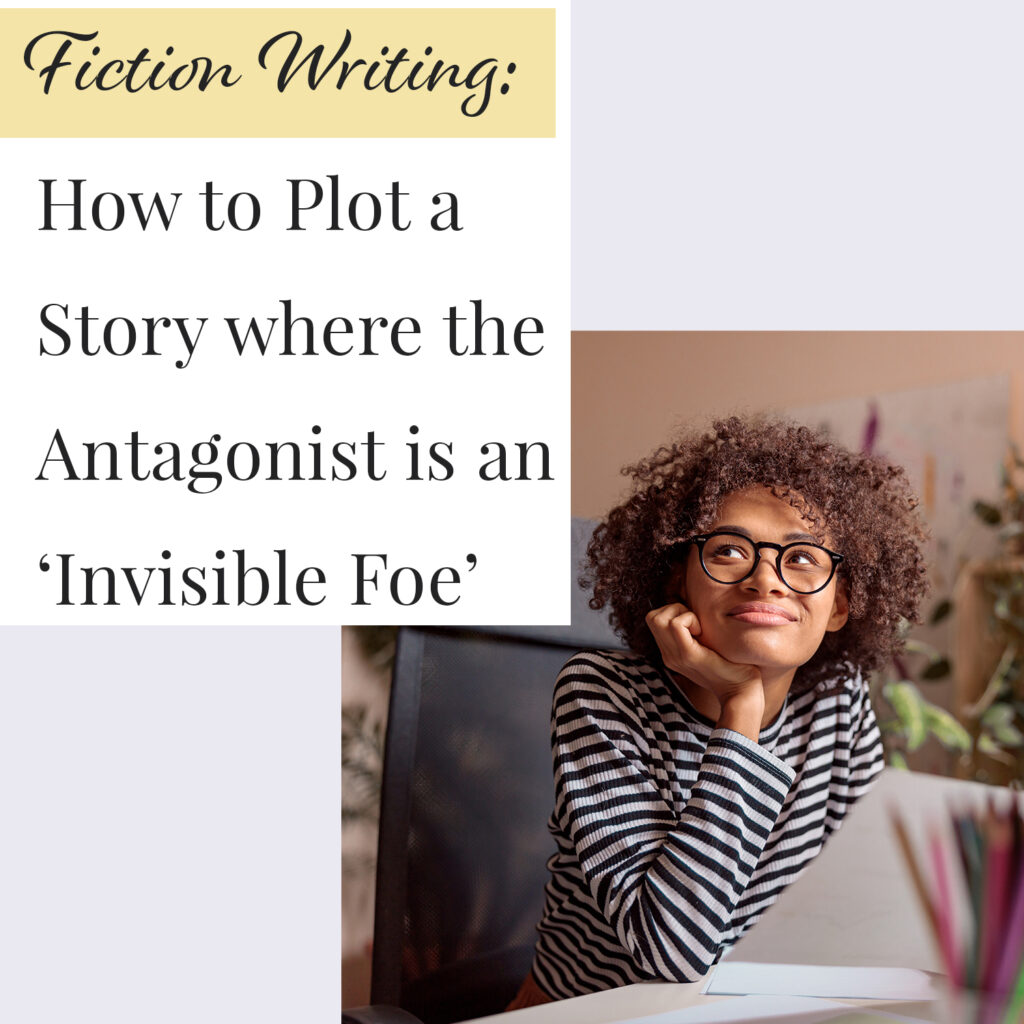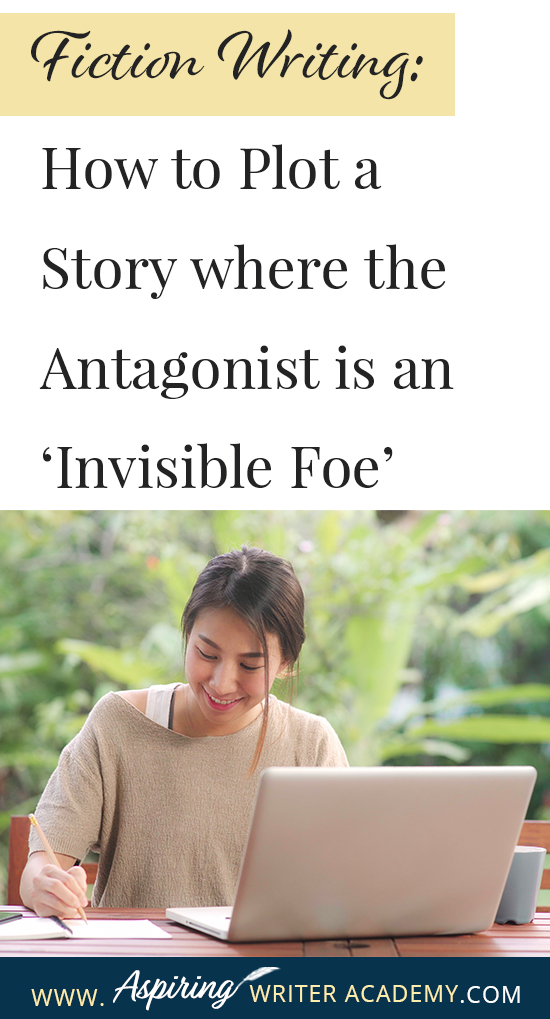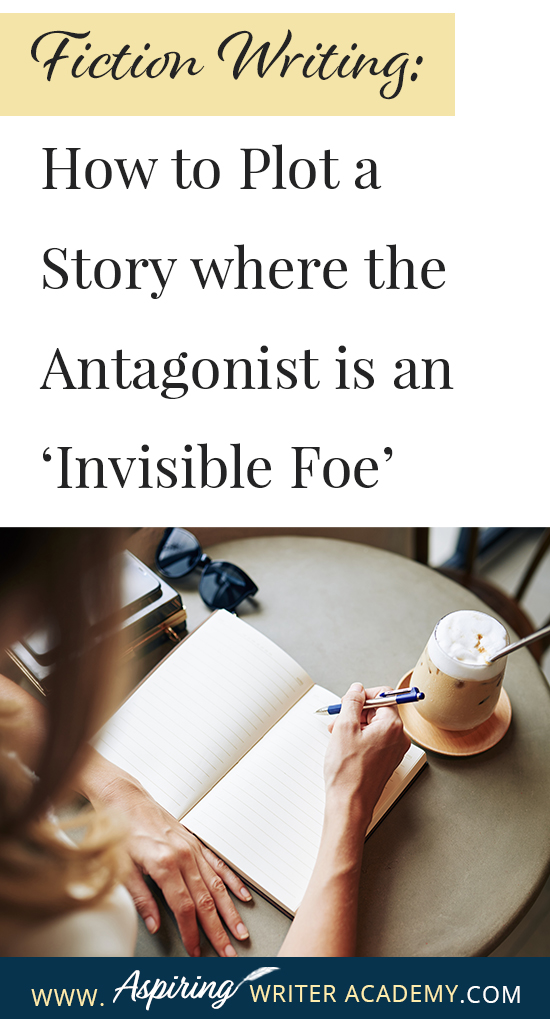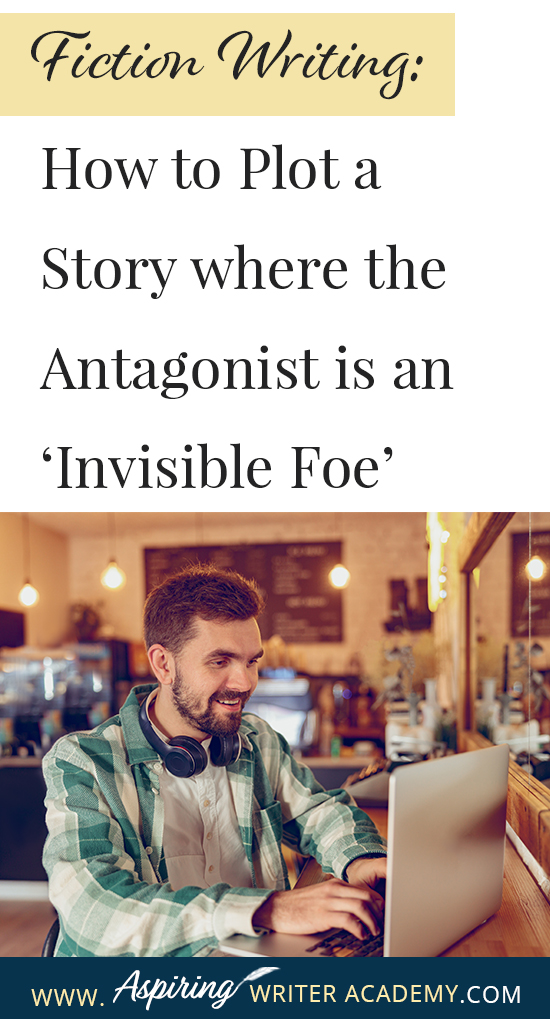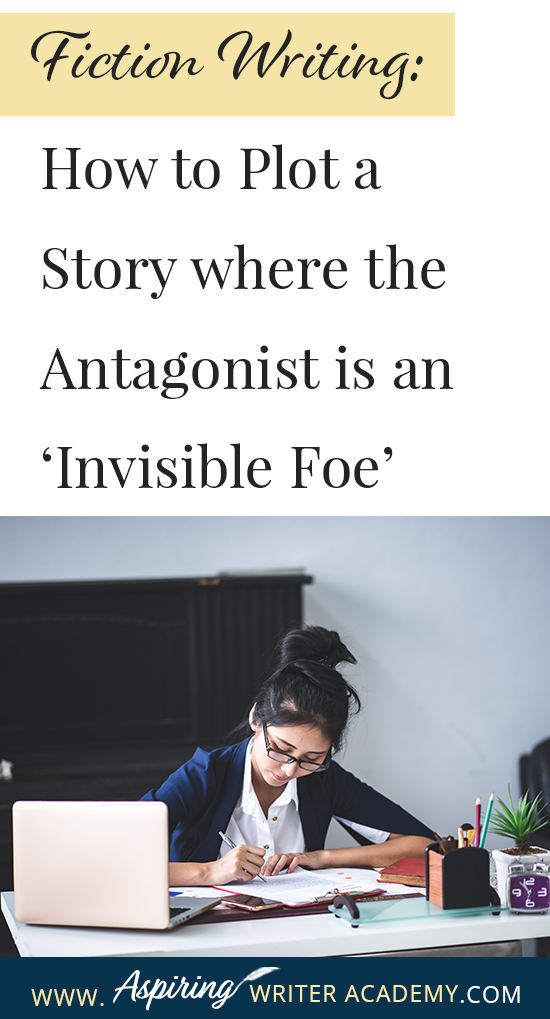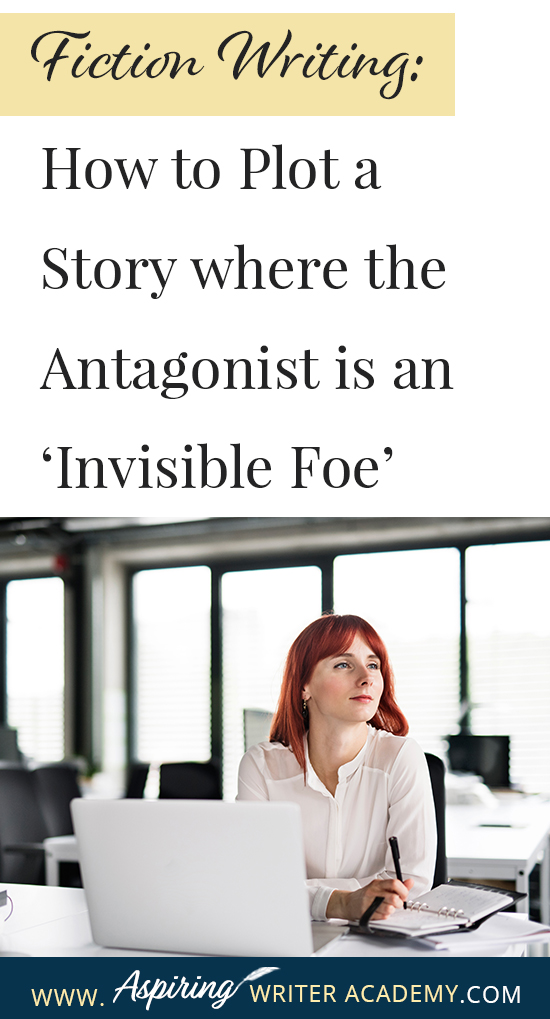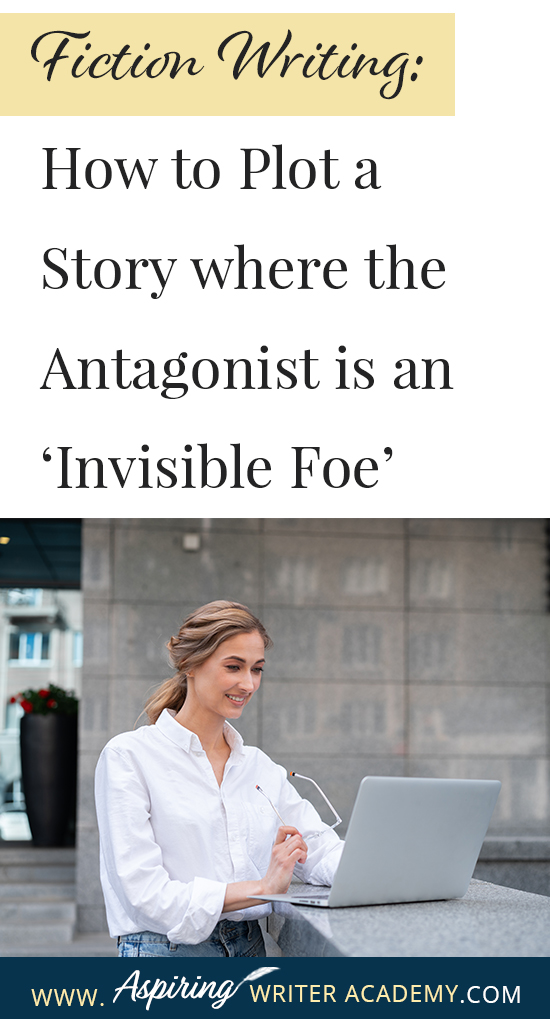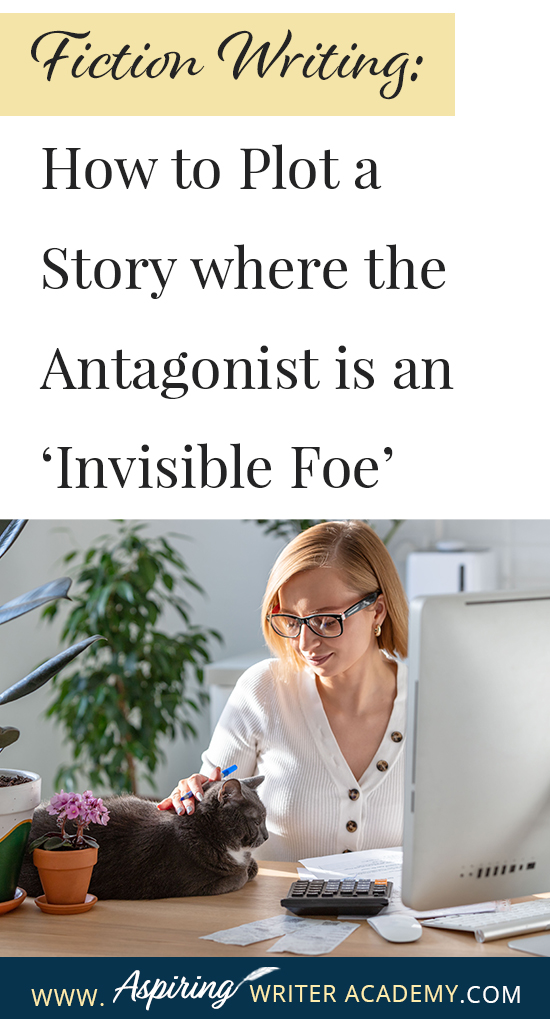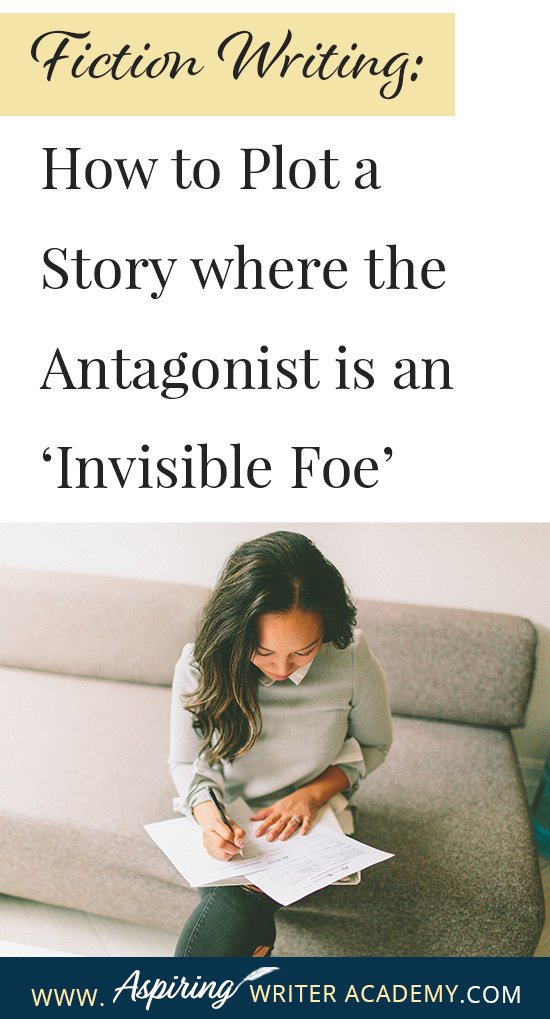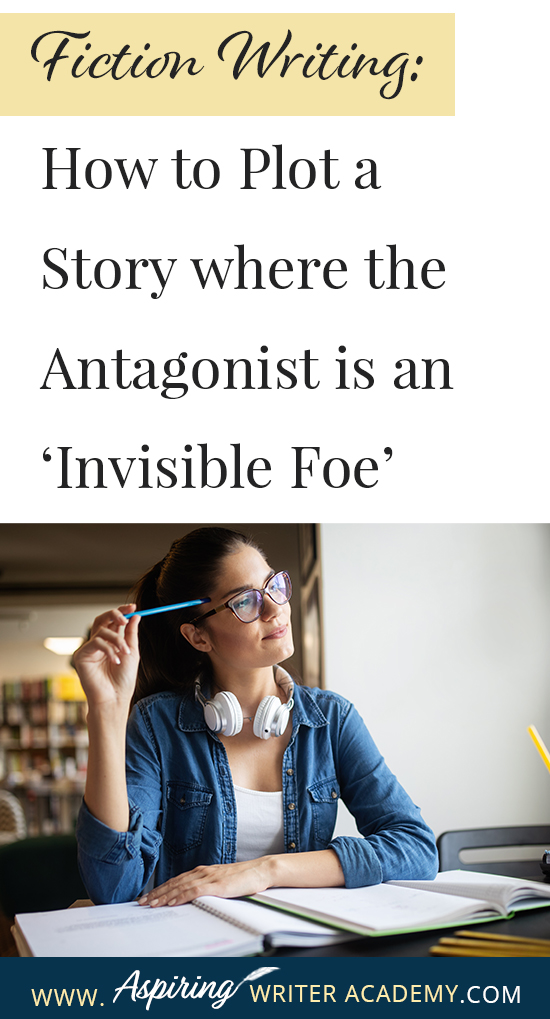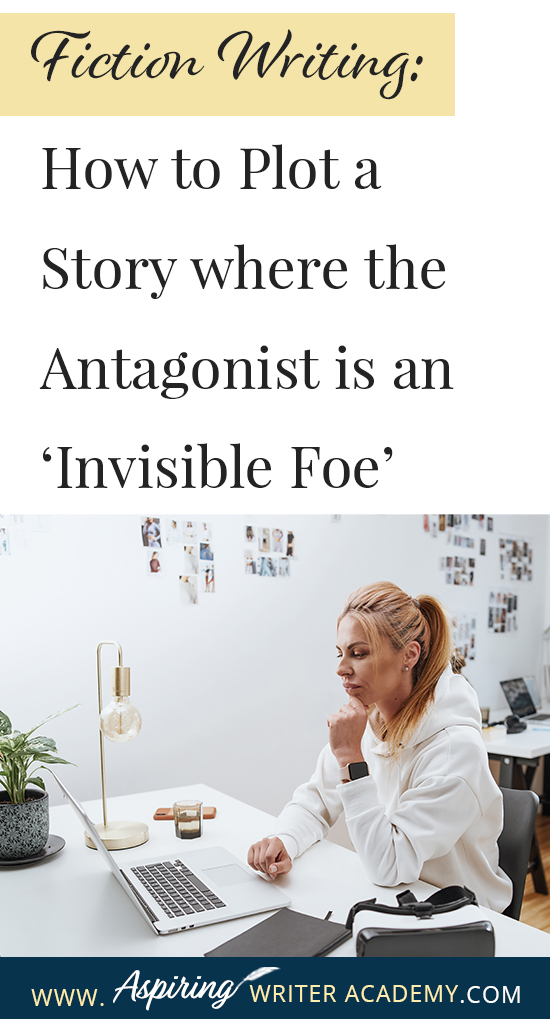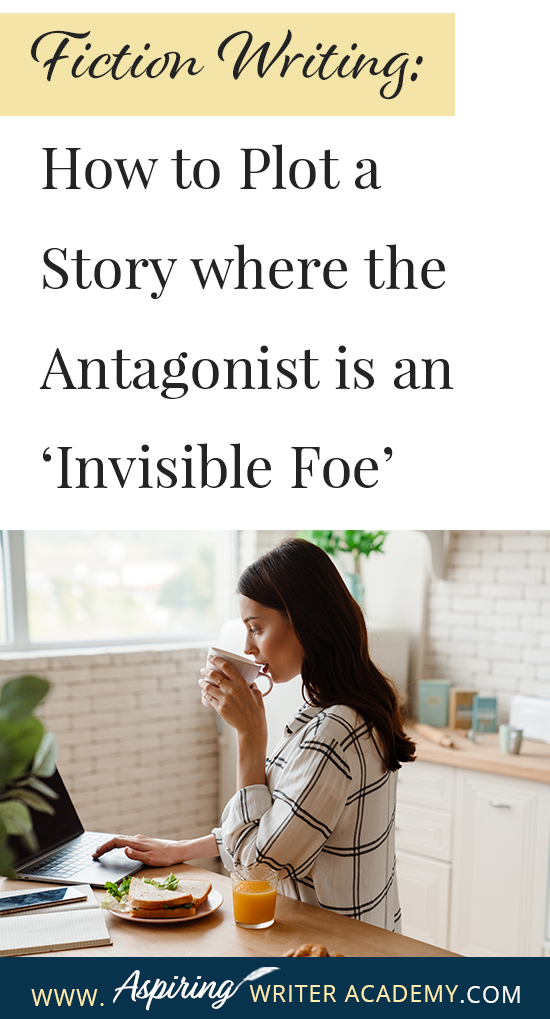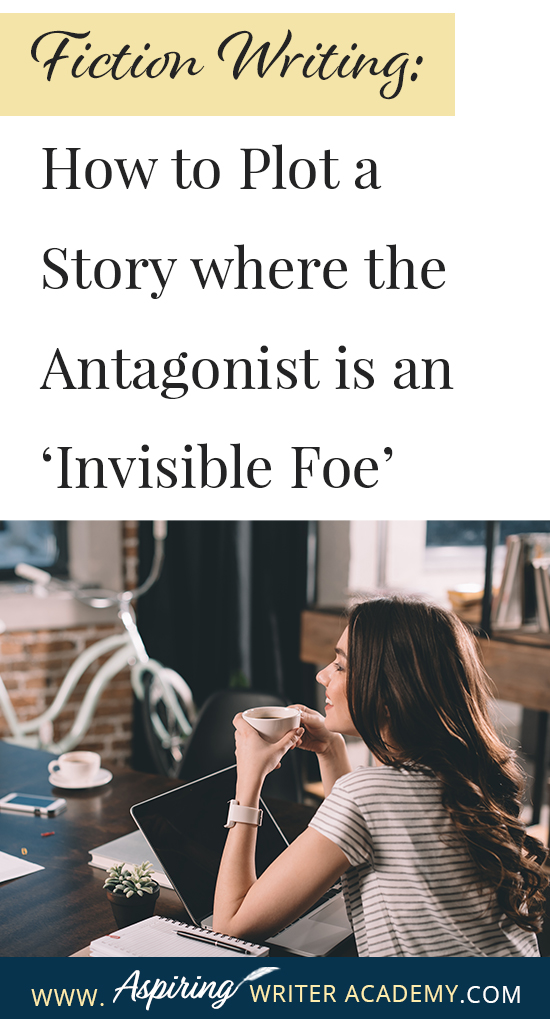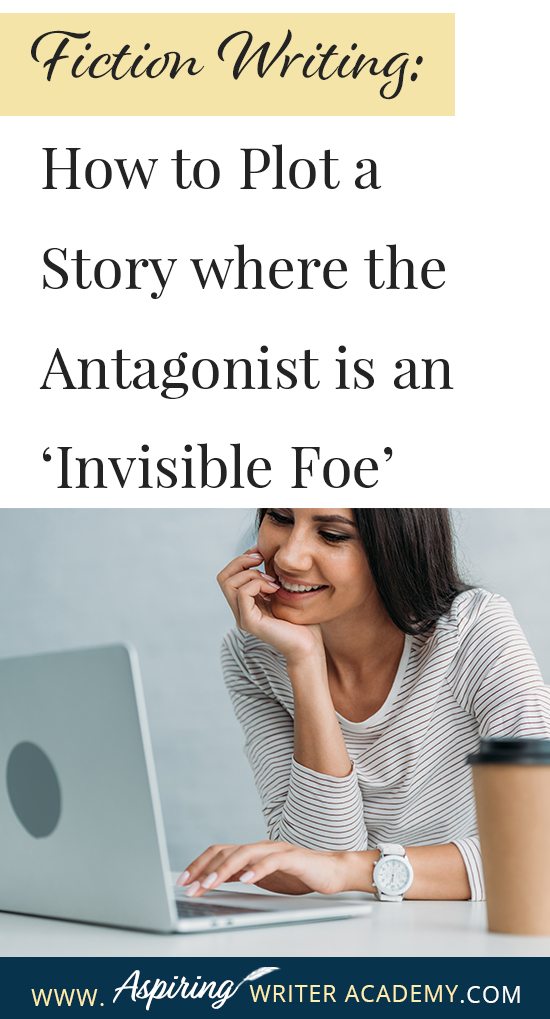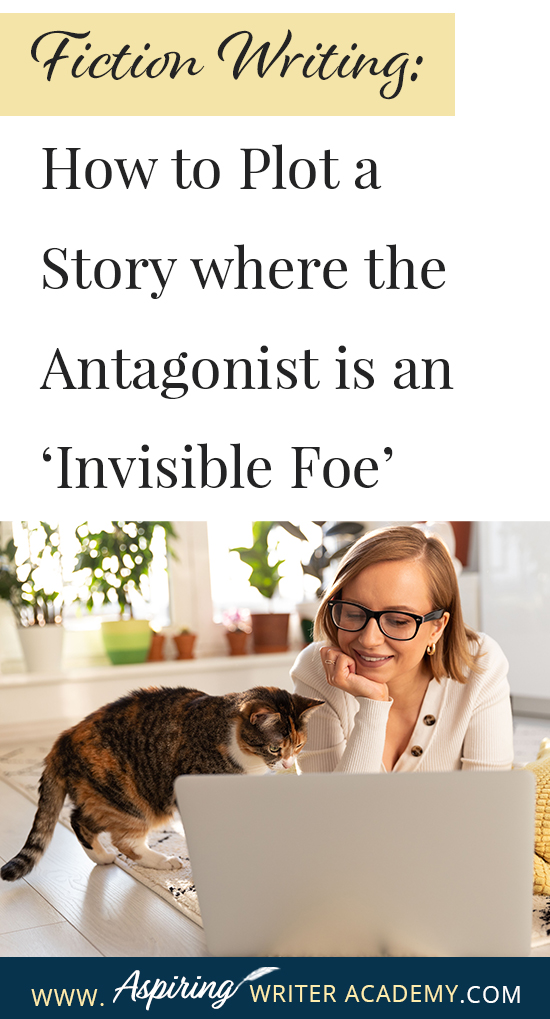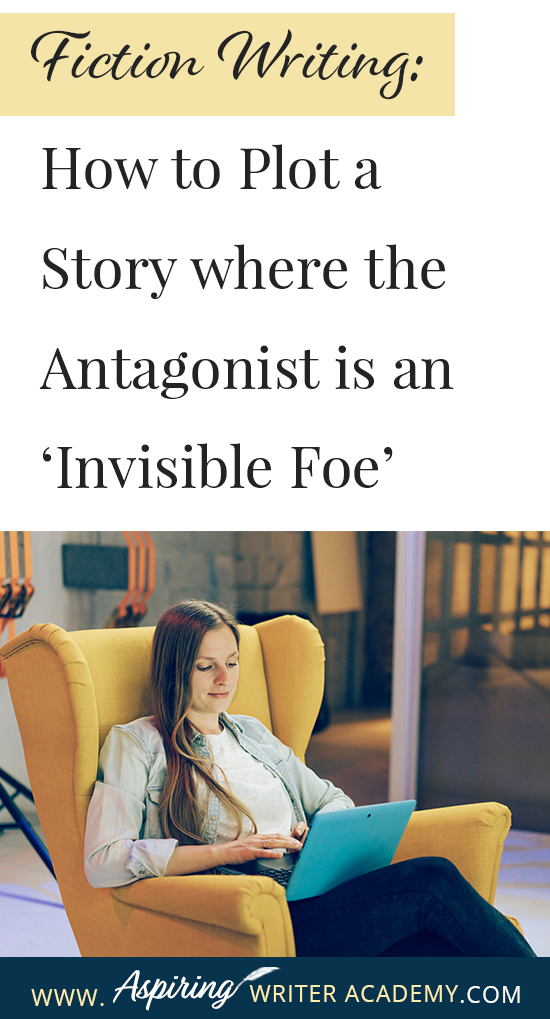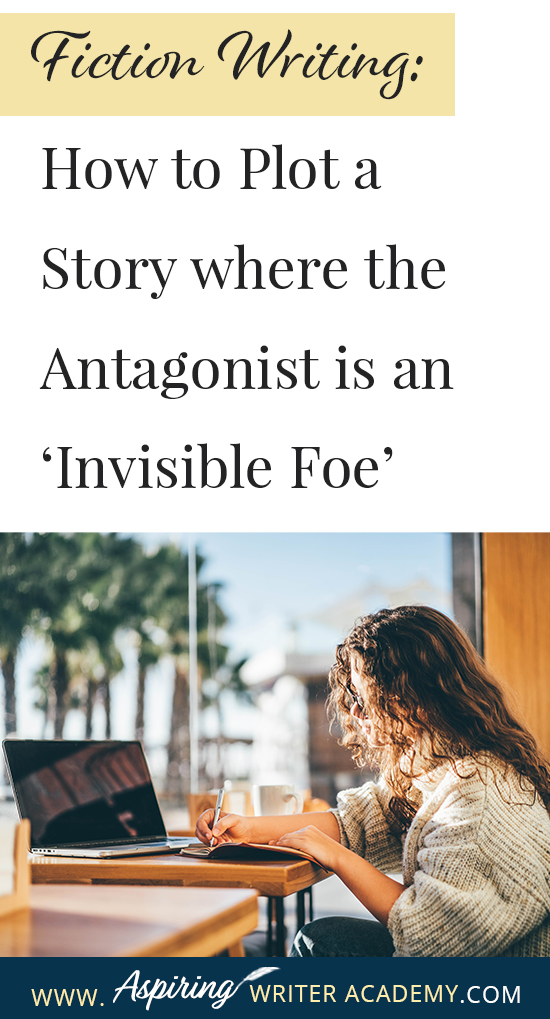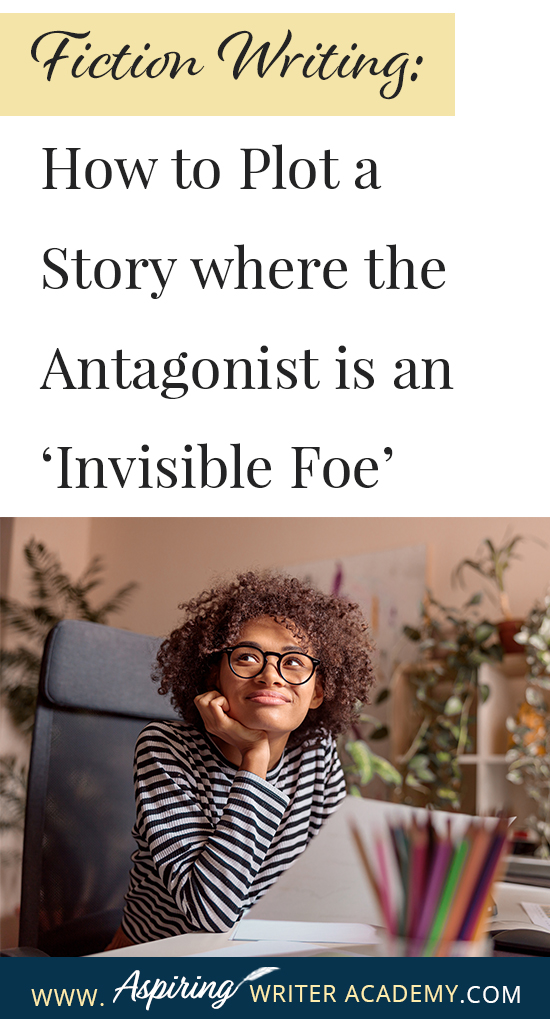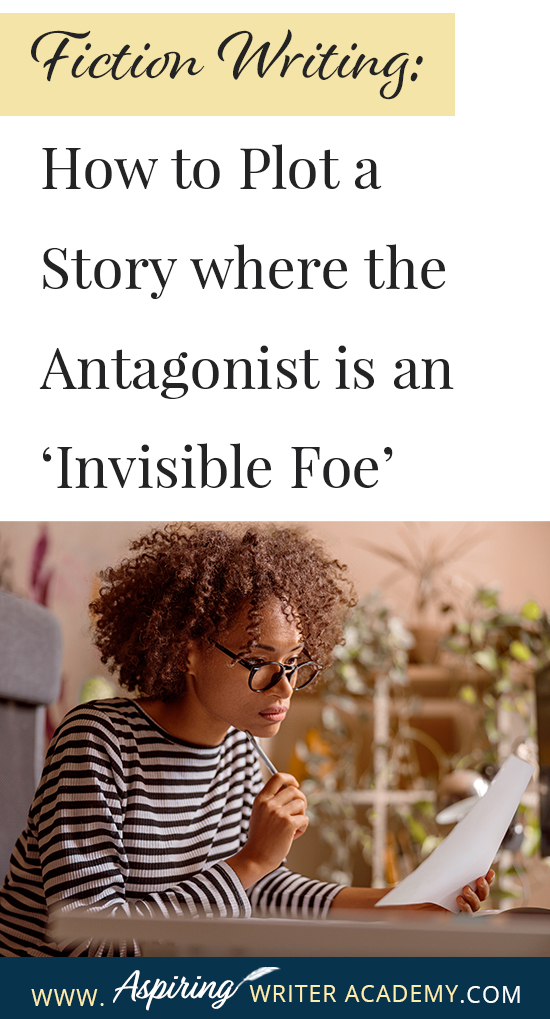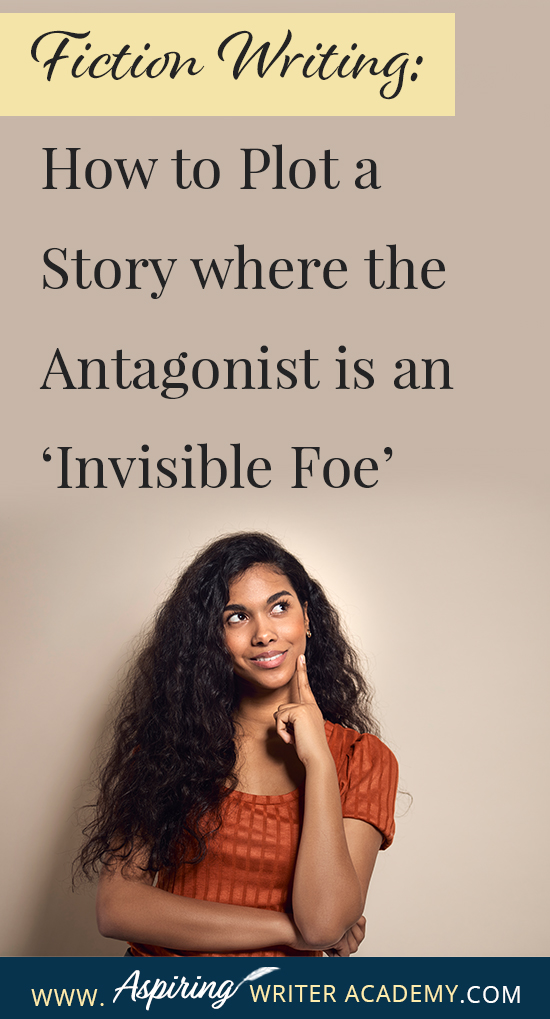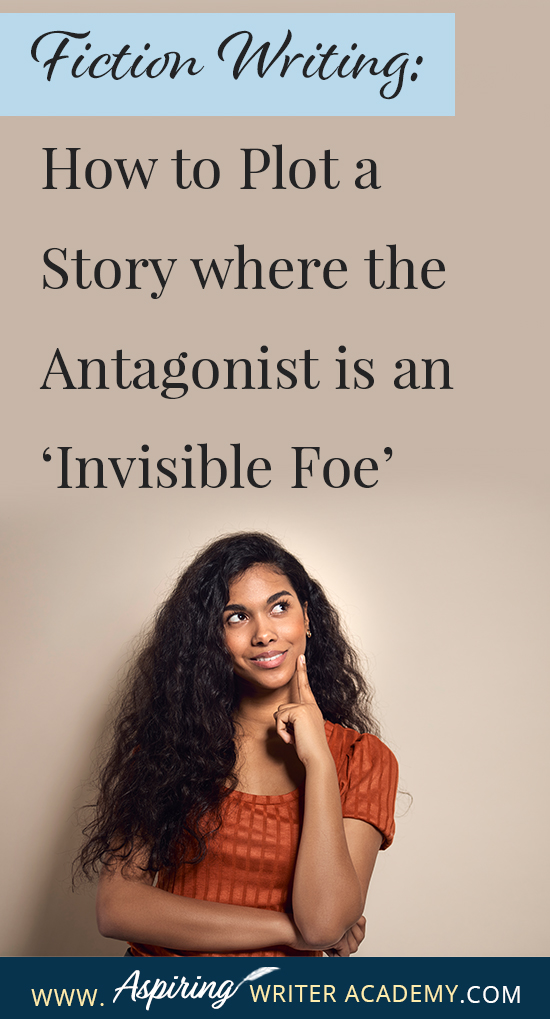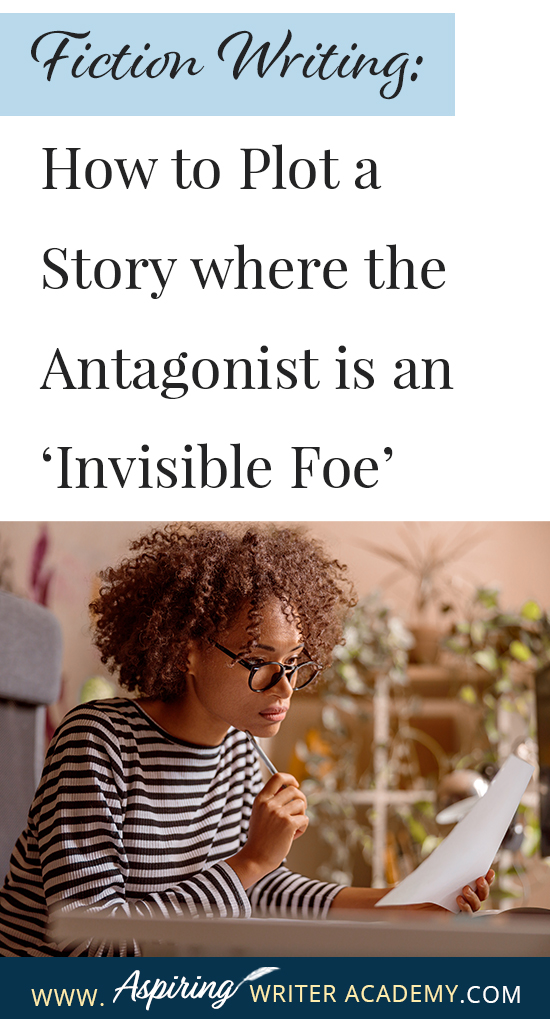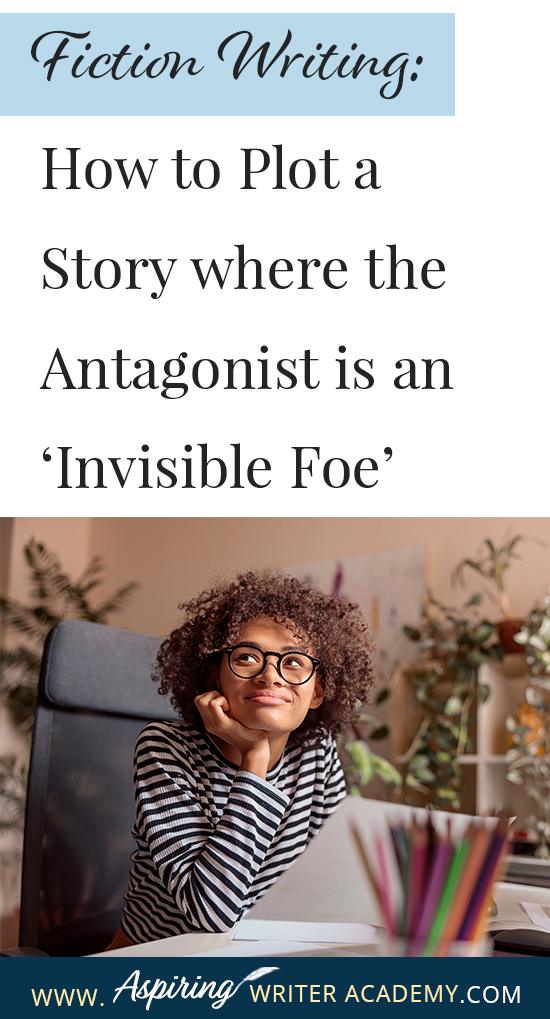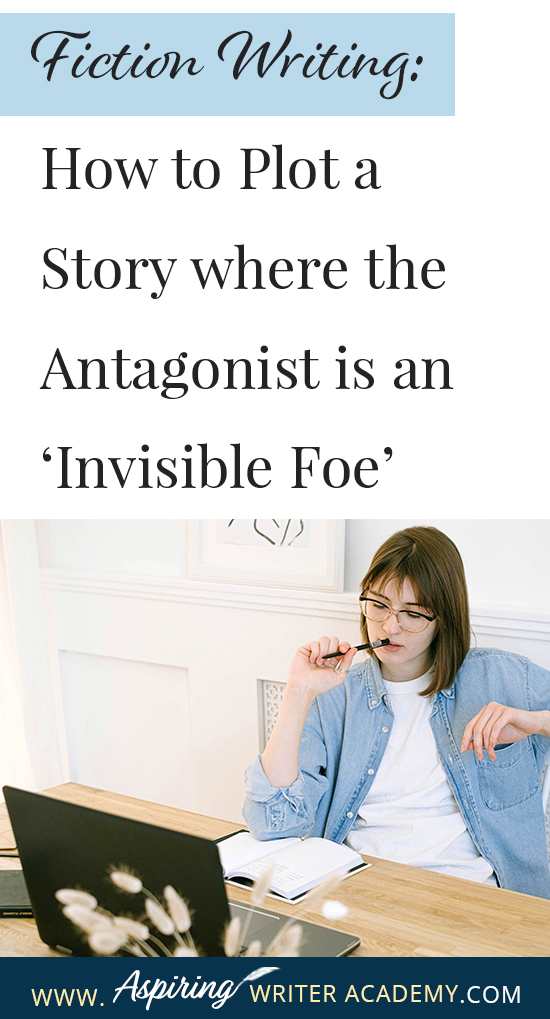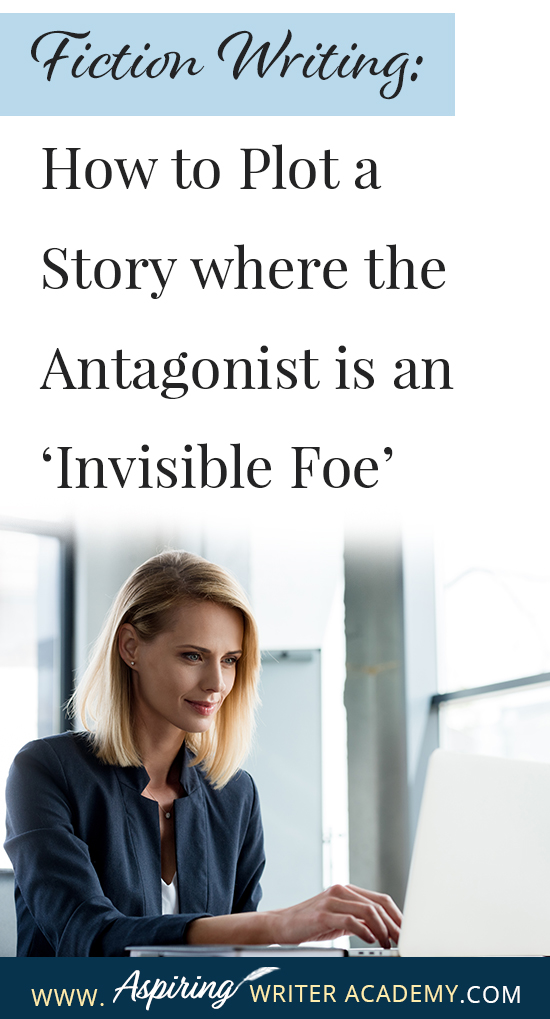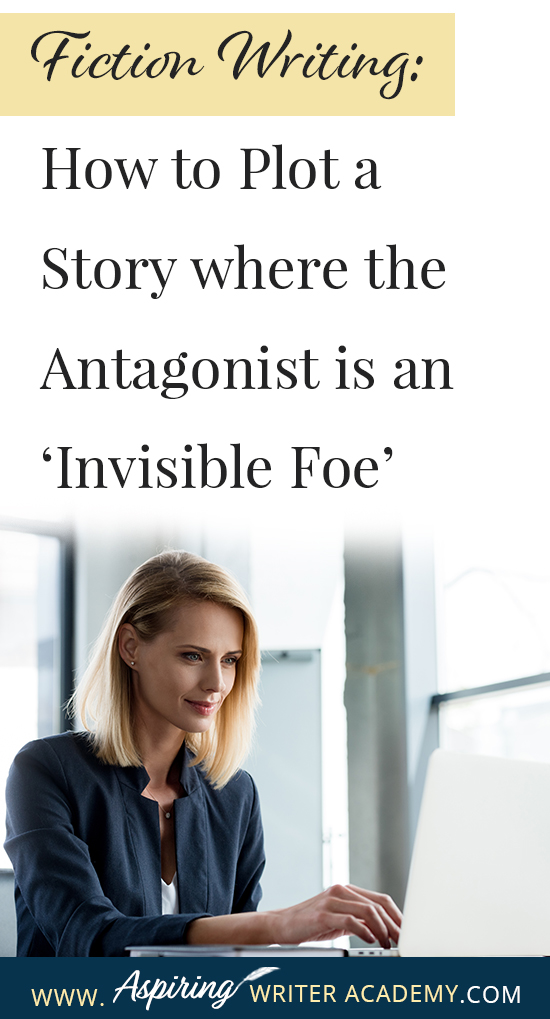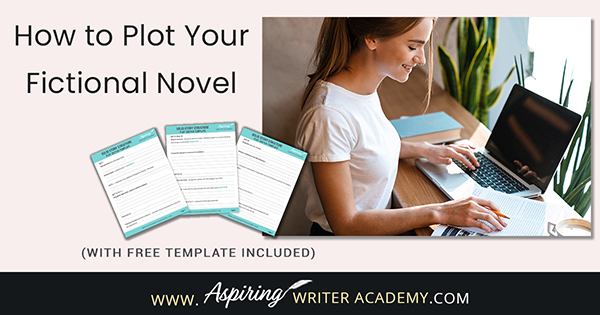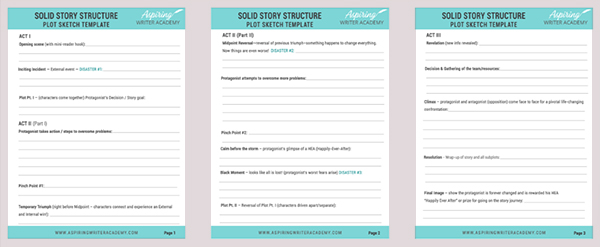Fiction Writing: How to Plot a Story where the Antagonist is an ‘Invisible Foe’
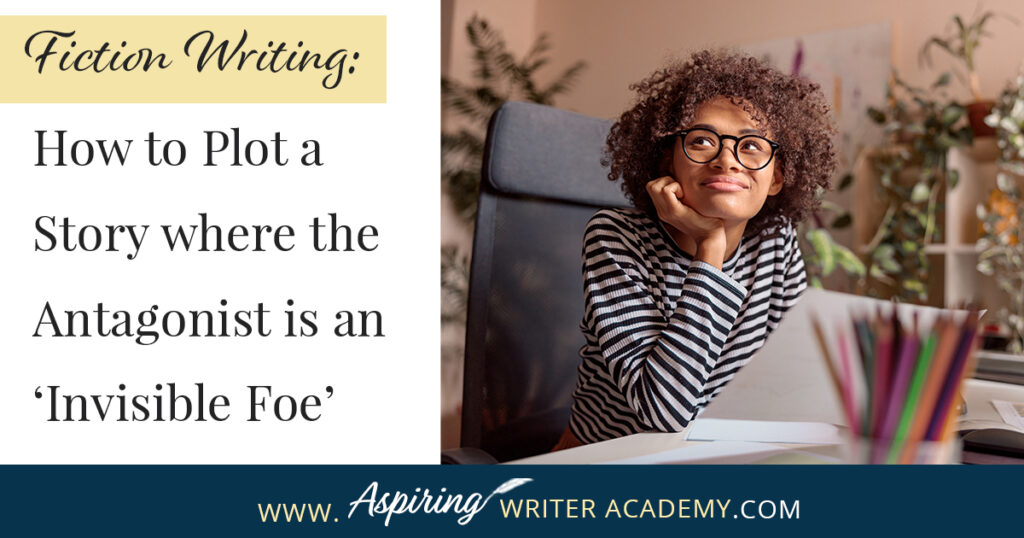
Plotting a fictional novel may seem easy when the antagonist your main character is fighting against is a formidable person or a savage shark or beast. But what if the opposition in your story is a force of nature like an approaching storm, or if the storm is within the mind of your main character, or perhaps in the shape of a horrific disease?
See how we break down the structure for such stories step by step in Fiction Writing: How to Plot a Story where the Antagonist is an ‘Invisible Foe’.
Defining the Opposition:
Sometimes it seems as if a story does not have any real villain or antagonist to thwart the main character as he strives to achieve his goals.
At least not in the form of another person or being.
Sometimes, there is no monster, alien, supernatural entity, intelligent robotic technology, or hostile society opposing your character.
However, what the antagonist / villain represent is OPPOSITION.
Opposition creates conflict within the main character, and the resulting tension keeps the story moving forward. Every story needs the conflict that comes from opposition, or it becomes a fanciful meandering romp that your readers are unlikely to find meaningful or relatable. After all, conflict is a part of everyday life. It’s how we strive to overcome conflict that makes life interesting.
3 Common Types of Conflict in Literature:
- Man vs. Man
- Man vs. Nature
- Man vs. Self
In this post, we are not talking about the conflict that comes from Man vs. Man. The opposition in your story could be in the form of a major obstacle, either from nature or one’s self (which creates conflict).
So what major obstacle, other than a physical opponent (Man vs. Man), is your character facing that will take him the whole book to overcome?
Examples of Opposition from Nature:
In the 1997 movie, Dante’s Peak, there are some people who oppose the main characters, saying the mountain isn’t going to blow, but the real threat to the characters and the whole town is the awakening volcano. In the beginning of the story, there is only a hint that something may be wrong. Then, more and more signs in nature reveal there really is a problem. Finally, it becomes clear the volcano is going to erupt and there is the mad dash to try to evacuate the town and get all the people out, a quest for survival.
It’s classic conflict: humans vs. nature.
Similarly, in the 1996 movie, Twister, the antagonist was the tornado.
In the 1998 movie, Armageddon, the antagonist was the asteroid which was heading toward Earth and threatening to annihilate the population.
In the 2004 movie, The Day After Tomorrow, the antagonist is the growing deep-freeze storm threatening to devastate Earth’s entire northern hemisphere.
Watch on Amazon: https://amzn.to/3MjpdSR
Watch on Amazon: https://amzn.to/3Vk9oze
Watch on Amazon: https://amzn.to/3TsQUev
Watch on Amazon: https://amzn.to/3eoPanC
Examples of Opposition from Self:
Stories of Man vs. Self could include:
- A person’s fight to overcome cancer. The opposition is the cancer within one’s own body.
- An individual’s quest to lose 50 pounds in 6 months. The opposition is this person’s cravings and desires for food which caused him to put on weight.
- Someone’s discovery and battle to overcome problems with mental health. The opposition is the mental disorder.
- An injured patient’s perseverance to beat the odds to walk again. The opposition is the patient’s endurance, will power, and physical ability to heal.
The major problem or obstacle they face is the opposition, the antagonist of the story trying to stop the main character from achieving his goal.
This type of opposition creates conflict in the character’s heart, mind, and soul. However, their inner turmoil may manifest into external conflict for both them and others around them.
Story Structure for Plots with ‘Invisible Villains’
If you are writing a ‘Man vs. Nature’ or ‘Man vs. Self’ type of story, the plot points in traditional story structure still apply, the same way you would structure a ‘Man vs. Man’ plot. You just have to look at it a little differently, as if the antagonist is indeed the tornado, or mental disorder, or the character’s own cravings.
So, let’s take a look at traditional story structure elements.
If you are unfamiliar with these terms, you may want to first read How to Plot Your Fictional Novel (with Free Template Included)
Click to download our free Solid Story Structure Plot Sketch Template to help you analyze books or movies, and plot stories of your very own.
ACT I
First, you have your Opening Scene. Something should be happening, something the main character needs to solve, or accomplish, or do, which could be related to or hint at the bigger story problem this character will face, but the main problem hasn’t arisen yet. Basically, this scene shows the character in action interacting with their ordinary world. Set the scene. Who is this character and what does your character most want?
For a ‘Man against Self’ type story, perhaps you will show a teen doing typical teenage things like playing soccer or helping a friend, when the challenge of doing so may seem a little bit off from the usual or what is expected. Show a hint there is something just a slight bit different. The reader may then ask – why is this teen having trouble with this? What is going on? Raising questions in the reader’s mind is good.
Then go on to introduce this teen’s relationship with others, perhaps the family, or friends, or groups this person may be a part of. Show us this teen’s goals, dreams, desires, special strengths, quirks, regular weaknesses (which may be the flip-side of their strength.) Example: if a character’s strength is leadership/control, their weakness may be showing or accepting their vulnerability.
Who does this person want to be? What do they want to do? How do they see their future evolving? (This will be important in your story if the future starts evolving differently than this person imagined.) Have them tell another their hopes in dialogue.
Try to start the story with dialogue and action – stay away from “telling.”
Also, do not include a lot of back-story (scenes or information from the past) in the first three chapters. Back-story should be sprinkled in on a need-to-know basis for the reader and then later, just before midpoint, you can go a little bit deeper. But first, just get the story rolling and moving forward.
While you have your character interact with others and go through these opening scenes you may want to continue to hint to the reader that something may be wrong, or at least not normal for your teen. (Even if the teen does not realize anything is amiss yet.) Perhaps the teen brushes it off as something else and makes excuses.
“I didn’t get that much sleep last night.” Or “I must have drunk too much Coca-Cola!” or “It must just be my nerves!”
In the same way, a “Man against Nature” story will have an opening initial problem the characters are taking care of, the characters and their relationships with one another should be introduced, as well as the setting with the ‘Nature’ element that will soon cause so much trouble.
Hints of the upcoming problem will come into play. Little things in the natural environment will be noticed that arouse suspicion. Doubters will downplay the evidence and cause friction with the characters. Excuses may also be made.
Two-thirds through Act I, which may occur in the latter part of Chapter 2 or the top of Chapter 3, your character should be faced with the Inciting Incident.
This is where something big happens that forces the character to realize they can’t hide or brush off this abnormal behavior anymore. (At least not to themselves.) They must face it and come up with a plan to try to deal with it. It will not go away on its own.
The character must take action. They make a Decision – (on how to deal with it) and this plan of action becomes their new Story-Worthy Goal which they will not solve until the end of the book.
This big goal should be able to be broken down into a series of “steps” like those on a ladder. A series of smaller goals that will help them achieve the larger goal.
Try to figure out at the beginning of the story – what exactly does this character want?
Nature: Does the scientist want to gain the evidence he needs to alert the town, should he find the volcano is going to blow?
Self: Using the teenage mental health example - Does the teen want to learn to cope with the disorder once they figure out that they have one and what it is? Or does the teen want to learn skills or techniques or find medicine to overcome it?
What exactly do you want to say to your reader? What message are you trying to convey? This will determine the main character arc and give you a starting and ending point in their story journey.
I also want to note here that if you do not have your character realize they have a problem until Midpoint or later in the book – that is too late. The story will drag. They must realize something is wrong at this first Inciting Incident Turning point – this first “disaster” or Game Changing Moment. This launches the character and the reader into the story. This is your first big story hook.
The Inciting Incident causes a realization which forces the character to make a decision on their next steps (all by the end of Chapter 3.) If you go past Chapter 3, the story is dragging.
The character may want to talk to someone else about what they might do, but they have to make a decision by the end of Chapter 3.
And if your character has a romantic interest or best friend or other person who is going to help them through the journey, then they must come together here and agree to work together to help solve this problem. The decision and coming together of characters is Plot Point I which ends Act I.
Act II
This Act begins with the character taking action on the first small step to solving their big problem.
Perhaps your character will want to research clues or symptoms, (either in nature or within themselves) talk to others who have similar problems to see if the symptoms match up, read books, Google, keep a secret diary or log listing they symptoms they are experiencing and how they feel about it.
Whatever happened at the Inciting Incident has scared this character and they will want to try to find ways to cope or understand what is happening. They realize something is WRONG.
Mental health example: The whole first half of Act II this teen will be more in reactive mode trying to actively find solutions or understanding.
Halfway through the first half of Act II you should also have a Pinch Point #1 Scene where the teen sees or hears something or experiences a moment that pulls on the heartstrings. This scene causes the teen to look back and realize what they have to lose if they do not achieve their goal of solving this problem or learn how to deal with this disorder.
Perhaps there is an awkward moment where the character wants something really bad, perhaps to fit in with their peers, and their disorder keeps them from doing this and the teen is heartbroken. Or perhaps they witness another who has a similar problem fail big and realize they too will fail big if they can’t figure this out.
This should be a real emotion moment for the character, and the reader, and can be brief, but poignant. It gives your character firm resolve to keep moving forward and serves as a motivator.
In a ‘Man vs. Nature’ story, the same applies. The opposition actively challenges your main character whether it is a force a nature, or a physical problem, or a problem from within.
Right before the Midpoint of the book, there is the Temporary Triumph.
In our mental health example, the teen should experience an external “win” in their fight against their disorder. The teen may find a solution that looks like it may solve their problem. Perhaps they find out about a new technique or program or class that looks promising to help their situation. The teen may share their joy with others and experience an internal win too. Their confidence is boosted. The teen feels good.
Then Bam! The Midpoint Reversal in the very next scene is Turning Point 2 or Disaster 2 or Game Changer 2. Whatever happens here is not good. It is a reversal of the Temporary Triumph and changes the story, turning it in a different direction.
Perhaps the new technique, program, or information backfires and is not a help after all. The solution they had discovered is not the answer. And now, something has happened where all secrets are exposed.
In a ‘Man vs. Nature’ story, if the government or group of people have been trying to hide the fact there is going to be a natural disaster, the public is now made aware and people start to panic.
In our mental health example, perhaps if the teen had been hiding their disorder from others, the teen now has an episode in public where there is no more hiding. Others have now found out. There is no going back. The problem or disorder has now escalated to a new level.
Perhaps the teen’s family now knows and insists the teen get therapy which the teen opposes. Or perhaps the other kids at school now stay away from this teen and call the teen weird. It is also possible that a “curtain” has lifted at the midpoint and the teen has more clarity about the problem and can better see what they are dealing with. The teen may have gained more knowledge or information that changes how they approach things now.
The second half of ACT II, the teen will take a more proactive approach and try new things to really get a handle on this disorder. They now have more knowledge and tools under their belt and will actively pursue different steps to achieve their goal of controlling or overcoming their disorder. The teen will take more risks, more chances.
Also, halfway through the second part of Act II, there should be a moment for Pinch Point #2. This time instead of looking back at what the teen has to lose if they do not handle this disorder, the teen will see, hear, or have a scene that causes them to look forward and see what they have to GAIN if they achieve their goal. This will also be a brief emotional moment that pulls on the heartstrings and motivates the character to keep going, to persevere!
Next there may be a Calm Before the Storm scene, where again (like the Temporary Triumph), it looks like things may be settling down or that things may turn out okay.
Then, just like the Midpoint Reversal, there will be the Black Moment. This is where something very emotional and big happens and the character feels they have lost in a big way. It seems like all hope is lost. Perhaps the character’s critical attempt to control nature or himself has failed.
In a story against nature, it seems as if nature will win. The volcano or asteroid or raging river or storm appears to take over in a big way, causing the characters to feel all hope of overcoming it is lost.
In our mental health story, the teen may have lost their temper or lost a handle on their emotions and given in to the disorder like they did in the beginning of the book. For a moment, the teen may forget all the progress made and techniques learned and throw it out the window when triggered by something that really gets under their skin.
Perhaps the teen feels shame, anger, and disappointment, not only in himself, but perhaps in the fact they let down others as well. The teen feels there is no hope for the future, that they will never learn to cope or control or overcome this seemingly monstrous disorder.
Due to what occurred at the Black Moment, supportive characters may leave and at Plot Pt. II (following the Black Moment), the main character finds himself alone.
Act III
Revelation: The character may be alone feeling sorry for himself, when all of the sudden they receive new information that they did not have before which changes everything.
In a story against nature, the main character may recall information or find a device or something that inspires them to regroup one last time to try to achieve their goal and survive.
In our mental health example: The teen learns new insight into what happened at the Black Moment and on how to achieve their goal and overcome the problem. Another person can deliver this info, or the character may read a book or find the answer on their own. This info changes everything. This is Turning Point 3 – Game Changer 3 – Coming out of Disaster 3 (which was the Black Moment). This will again turn the story in a different direction.
The character now makes a Decision to re-gather the team, and any necessary tools/supplies, and attempts to overcome their problem once and for all.
Nature: The character comes face to face with the fury of Nature.
Mental Health: The character comes face to face with his disorder at some prominent public event and fights against it giving everything he’s got.
This is the Climax. The final battle. Either against Nature or Self.
The teen will either learn to cope, manage, or overcome the disorder with the new skills and knowledge he’s gained, or he will not. This should be the most climatic scene in the book where everything is laid on the line. Make it intense, emotional. Make it matter. The teen’s team of family or friends can help, now that they’ve resolved their differences after the Black Moment.
I assume you will show the character triumphant so the story can encourage others and give them hope that they too can learn to live with acts of nature or health disorders. Inspire the reader to believe that they, too, may persevere against physical challenges or addictions.
After the Climax, you may want to quickly wrap up subplots with the character interacting with others and perhaps being offered a position or opportunity they once didn’t think would be possible.
Final Image/Capping off scene – Show the character in a scene where they do something to truly prove they’ve learned a lesson or changed (in a more subtle way than the climax) or has at least gained a comfortable level of acceptance of nature or their disorder and how to handle it.
Show the character doing something that they couldn’t do at the beginning of the book. Perhaps have a line or two of dialogue that shows the reader that the character is at peace with himself and his condition and his future. It can be a humorous line or something more serious and serene, depending on the tone of your story.
Additional Thoughts:
How does this story structure line up with your own writing? Have you included all the steps or are you missing some?
I hope that you have enjoyed Fiction Writing: How to Plot a Story where the Antagonist is an ‘Invisible Foe’ and have downloaded the Free Solid Story Structure Plot Template to help you outline your work-in-progress.
If you like more help developing your story, you may wish to download our Free Brainstorming Your Story Idea Worksheet
Do you find it difficult to create compelling antagonists and villains for your stories? Do your villains feel cartoonish and unbelievable? Do they lack motivation or a specific game plan? Discover the secrets to crafting villains that will stick with your readers long after they finish your story, with our How to Create Antagonists & Villains Workbook.
This 32-page instructional workbook is packed with valuable fill-in-the-blank templates and practical advice to help you create memorable and effective antagonists and villains. Whether you're a seasoned writer or just starting out, this workbook will take your writing to the next level.
If you have any questions or would like to leave a comment below, we would love to hear from you!
Our Goal for Aspiring Writer Academy is to help people learn how to write quality fiction, teach them to publish and promote their work, and to give them the necessary tools to pursue a writing career.

ENTER YOUR EMAIL BELOW
TO GET YOUR FREE
"Brainstorming Your Story Idea Worksheet"
7 easy fill-in-the-blank pages,
+ 2 bonus pages filled with additional story examples.
A valuable tool to develop story plots again and again.
Other Blog Posts You May Like
What Authors Need to Know About ISBN Numbers Before Self-Publishing
Fiction Writing: How to Find a Critique Partner/Group
How to Research Information for a Historical Novel
7 Steps to Begin Writing a New Fictional Story
Learn to Plot Fiction Writing Series: Story Analysis of the movie “Signs”
Fiction Writing: How to Get a Literary Agent
How Writing Prompts Can Improve Your Fictional Story
Creative Writing: 5 Ways to Strengthen a Weak Fictional Character
Fiction Writing: Create a Storyboard to Map Out Your Scenes
Fiction Writing: How Specific Details Can Bring Your Setting to Life
How to Spot Publishing Scams & How To Avoid Them
5 Common Mistakes New Writers Make
Fiction Writing: Story Analysis of the movie “Passengers”
Fiction Writing: How to Write Compelling Dialogue
Fiction Writing: 5 Key Differences Between a Novel and a Novella
Pros & Cons of Traditional vs. Self-Publishing Fiction
3 Ways to Avoid Writing ‘Episodic’ Scenes in Fiction
Fiction Writing: Office Supplies to Help You Prepare to Write Your Next Novel
Scene & Sequel: The Secret to Plotting an Epic Novel
Scene & Sequel: The Secret to Plotting an Epic Novel (Part 2)

is a multi-published author, speaker, and writing coach. She writes sweet contemporary, inspirational, and historical romance and loves teaching aspiring writers how to write quality fiction. Read her inspiring story of how she published her first book and launched a successful writing career.

